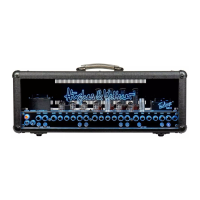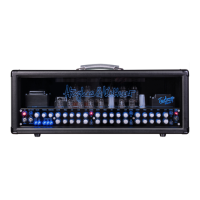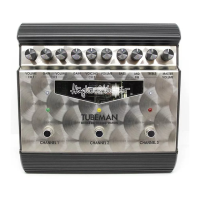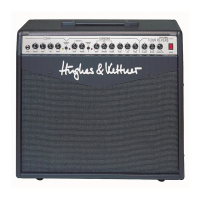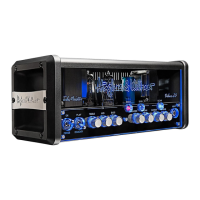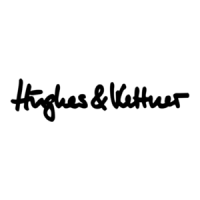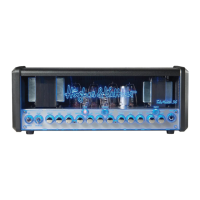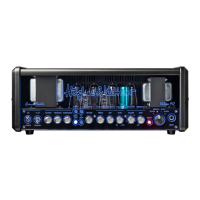Do you have a question about the Hughes & Kettner TRIAMP and is the answer not in the manual?
Covers water, placement, ventilation, power source, grounding, cords, liquids, and not opening case.
Lists situations when to unplug and refer to qualified service personnel.
Details correct power cord selection and fuse replacement for safety.
Details AMP 1's classic clean tone, CHANNEL A warm distortion, and CHANNEL B edge.
Covers AMP 2's dynamics, expressiveness, CHANNEL A rhythm tone, and CHANNEL B sustain.
Explains AMP 3's distortion quality, lead sound, and high-gain sustain.
Explains how TriAmp achieves different sounds via tube stages and power amp design.
Instructions for setting voltage, checking fuses, and connecting power safely.
Details controls like Standby, Presence, Master, FX-Mix, Amp 3, FX Loop, MIDI Learn, and Amp 2 Master.
Covers speaker jacks, Red Box DI Out, FX Send, and -10 dB switch.
Describes guitar input, EQ section, gain controls, and tight response.
Details FX loop connections, reverb controls, stageboard input, and mains power.
Illustrates a standard setup connecting the TriAmp to a mixer, FX unit, and guitar cabinet.
Explains how to select channels via front panel, stageboard, or MIDI.
Guide to connecting and mixing external effects processors with the TriAmp.
Details the balanced DI output for connecting directly to a mixing console.
Provides instructions for installing the MSM-1 MIDI Module for channel and FX loop control.
Guides on identifying worn tubes and the recommended replacement types.
Instructions for replacing tubes, including matching, hum adjustment, and biasing.
Tips on using the standby switch and avoiding mechanical shocks to prolong tube lifespan.
Diagnoses issues with power, standby mode, gain/master settings, and FX-MIX.
Addresses recurring fuse problems and unintended FX loop activation.
Troubleshoots thin/muddy sound, PA feedback, ringing noises, and old tube characteristics.
Lists preamp and power amp tube types, and instrument input impedance.
Details output specifications and power ratings into various impedances.
Covers voltage, fuses, power consumption, and physical dimensions/weights.
| Channels | 3 |
|---|---|
| Preamp Tubes | 7 x 12AX7 |
| Poweramp Tubes | 4 x EL34 |
| Reverb | Yes |
| Weight | Approx. 22 kg |
| Type | Tube Amplifier |
| Power Output | 100 Watts |
| EQ | 3-band EQ per channel |
| Effects Loop | Yes |
| Footswitch | Included |
